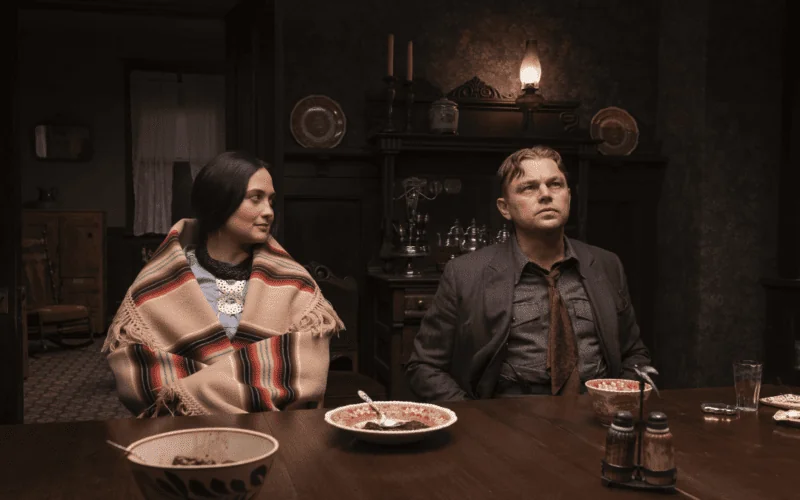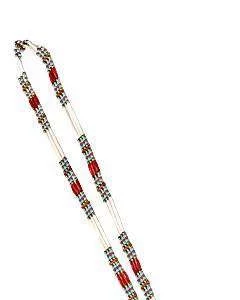In “Killers of The Flower Moon,” Martin Scorsese's adaptation of David Grann's 2017 book, a dark chapter in American history is brought to life on the silver screen. The film delves into the gruesome murders of wealthy Osage people in 1920s Oklahoma, triggered by the discovery of oil on their land. Despite its financial success and the star power of actors like Leonardo DiCaprio and Lily Gladstone, the movie falls short in representing the Native American perspective, leaving their stories overshadowed by yet another Hollywood tale told through the lens of white protagonists.
The opinion below by Jeanette Centeno delves into the missed opportunities in the film, highlighting the importance of centering Native voices and experiences in narratives about their own history. By examining the film's focus on white characters and government involvement, the piece raises crucial questions about the portrayal of Native people and the historical injustices they endured.
The article also sheds light on the film's portrayal of violence against Native women, a haunting reflection of the systemic issues that persist in modern times. Centeno argues that “Killers of The Flower Moon” could have been a platform to address ongoing challenges faced by Native communities, particularly Native women who remain disproportionately vulnerable to violence.
As Scorsese and DiCaprio's movie receives accolades and attention, Jeanette calls for a broader dialogue on contemporary Native issues, emphasizing that Native stories are an integral part of American history and deserve to be told with authenticity and responsibility.
Killers of the Flower Moon Review and Opinion
Native American stories always miss the mark in Hollywood, where tales are seen through whitewash rose-colored glasses and Martin Scorsese's adaptation is no different.
The film, Killers of The Flower Moon from David Grann's 2017 book, tells the story of how white Oklahoma settlers targeted wealthy Osage people in the 1920's. The Osage Nation suffered a series of unresolved murders, committed after oil was discovered on the land. The three-an-a-half hour western, has already made $44 million dollars and is expected to be one of the biggest winners come Oscar time.
However, the movie may have missed a huge opportunity to include a Native perspective and examine the effects it had on the Osage Nation.
The movie focuses on the Burkhart family while the book focuses on the FBI investigation. Although beautifully shot, and actors like Leonardo DiCaprio and Lily Gladstone give outstanding performances, the story is told through the perspective of white men.
It's a perspective we have seen many times before and doesn't really add anything new to the native story. The Osage people were just a backdrop for another Hollywood tale. If you're able to watch the movie, you can clearly see some parallels between white men and the government and its treatment and views of native people.
Robert De Niro plays William “King” Hale who poses as a friend and confidant to the Osage only to later learn he has been scheming to steal their wealth. It's modern colonialism to take the native land and wealth by any means necessary. Furthermore, it highlights the violence and disregard of native women but gives little resolve to the continual issues Native women face today. If the story were told through the eyes of Mollie Burkhart, it would have given The Killers of the Flower Moon a native voice. The story would have made a bigger impact on the Native Community and provided a chance for other issues to be discussed in the media.
One scene in particular where Ernest Burkhart, played by DiCaprio, arrives at Osage County, and he's struck by the beauty and wealth of the land. He asks, “Who's land is this?” and Henry Roan, played by William Belleau, responds, “It's mine.” This sets the tone of how many people in society refuse to believe this is Native Land and that under the hands of native people it can flourish. There's an undertone to Osage County set by the white settlers, much like our own government, that Native people can't possibly take care of themselves or the land. The Osage were not just wealthy, they were wealthy in a reservation, where the law required white guardians to manage their money. Colonizers dictated the laws, stole the land and wealth, killed the women and unfortunately, they are now telling our stories.
Women in The Killers of The Flower Moon were targeted simply for being Native. They were commodities – a means to an end, to gain wealth and prestige. Osage women deserved to feel safe in their community but the justice system failed them.FBI was in its infancy in the 1920s and although the Osage community was wealthy (They raised 20k to look into a Burkhart murder.)They had no real power in the judicial system. Violence and murder against women were never investigated, thus creating a cycle we still see today. Native women are 10 times more likely to be murdered or experience violence and even in the wealthiest Native communities, there is a lack of justice.
Scorsese and DiCaprio missed the opportunity to bring awareness to this issue and so many others. Violence is very real to many Native American families and Flowers of the Killer Moon is an example of generational trauma against indigenous people. Scorsese and DiCaprio will likely win awards for the movie, but will they use this opportunity to create a dialogue to discuss current issues facing Native people?
Hollywood can no longer sit idle and tell our stories having some responsibility to the people. Society has to realize that Native stories are American stories that are movie-worthy. Flowers of The Killer Moon provided Scorsese with an Oscar-winning epic tale, but he failed to see there's a responsibility to the people and their real experiences. Killers of The Flower Moon is not just a tale made for the movies, but a wound that continues to affect the Native Community.
Perhaps as consumers and as a community, we should not employ actors to tell our stories, but we live in an age where even some tales need partial visibility. Scorsese opened the door, we must use this to our advantage and keep telling our stories until they heal the wounds of the past.
2023 Explore Native Challenge
Bonus Code – 8224096




GREENE ELM
says:I saw the movie and I knew at the end of the film when they played the music and announced the facts of the findings according to yhe FBI that he went to jail as if it was a joke. I knew that there was a GREAT DEAL MISSING. We are the Indigenous and our ancestry will continue to live! No matter what we suffer. Do you know why? Because you cannot take something that NEVER belonged to you in the first place. This will be the falk of White Men. The main thing they forget is they have Indigenous children so I say “Who is Uncle Sam?” The FIRST THE INDIGENOUS.
Alana Miller
says:I read the book, I do not agree it was just the story of the FBI. The first half *was* the story of the indigenous families intersecting with the white men who were exploiting them. Grann could have done a better job of drawing indigenous lives and how they differed and were the same as the white inhabitants at the time. I likely will never see the movie for the reasons enumerated above. This story of injustice is never *entertaining* and that is what Hollywood does. The story needs to be out there, but not as a blockbuster movie, but rather, a documentary.
Cyndee Farlow
says:Bravo for speaking out. Are we supposed to believe there was not one or two Osage members who were qualified to portray their own people in the leading roles or consult with writers in their own story of struggle? It confuses me. I thought this movie was supposed to be focused on the struggle of a people.
joe franks
says:someday l,ll see this new movie, perhaps it will bring tears to my eyes and surely another ” indian” movie will sell lots of stuff to all the people that can,t get inspiration except from seeing more natives going down. there,s no way the movie going public can get to a spiritual place with going down that long long road of violence and death without being pushed along by another story that has a victim and a perpetrator of evil. the truth is that nativepeople know that the great spirit doesn,t care about the ugly past and the ways of the people that don,t know what will come. all the peoples of the creation will learn of the earth,s greatness in their own time and ways.
Rose
says:looks like the Natives have also sold out in the media dept when it comes to depiction of their women. Its interesting that in the black and latino (and other non-whites) and now the Natives have all promoted the whiter “prettier” women to the darker skinned men. Its not all like that, and they too are guilty for Still using and pushing colonized version of beauty.
Cyndee Farlow
says:Rose, if you find how how the leading lady qualifies as being called indigenous, can you explain it to me? In my research, her Mom can trace a 1st cousin 4 times removed to the British Prime Minister William Gladstone, and her Dad, Howard ? Is able to trace his roots to the Blackfeet and Nez Perce communities.
Pam
says:Thank you Jeanette Centeno for your article regarding the recent movie “Killers of the Flower Moon.” I have read the book and have seen the movie. It is an unsettling, heartbreaking book & movie to say the very least. I am not Native American but have always had an interest in the history & lives of native peoples, this story again leaves me shook once again by human behavior. The book was hard to read as was the movie to watch but am glad that they are out there for people to take in and open a door to further learning. I would have liked to have the women’s perspective brought to the forefront. It certainly would have given more depth/understanding of what these women then and now experience. I appreciate your article it has added to my learning and understanding. Thank you as well for the work that you do.
Ben Goff
says:I know it all boils down to having big names behind it like Scorsese, but why can’t Native Americans make their documentaries/movies the way they want, using Native American actors? Then there wouldn’t be anyone saying this didn’t happen or they didn’t really do a certain scene that really happened.
Merrily Satterstrom
says:I wholeheartedly agree with your synopsis of the film and its shortcomings in portraying a broader cultural sense of the Osage community and individuals. However, Scorcese’s film was, in my opinion, a fairly accurate rendering of the book by David Grann. As I read the book I was finding that I wanted to know so much more about the Osage as individuals and how they maintained their cultural roots. If anything, the lack was there before the film. It is an important history that we need to pay attention to; another example of what has been, and continues to be, a confirmation of our national racism and power vs. the oppressed.